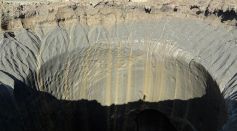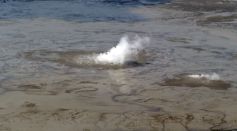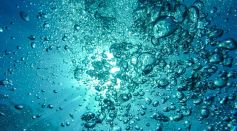Tags: Methane

Food Waste: Here's How It Contributes to Greenhouse Gas Emissions, Harms the Environment
Methane, Ethane Waves May Be Responsible for Eroding and Reshaping of Titan’s Lakeshores

Titan Alien Lake Shores Exhibit Signs of Erosion From Massive Waves, Analysis Reveals

Breeding Less Farty Cows Could Help Address Global Warming by Reducing Methane Emissions, Study Reveals

Aliens on Mars? NASA Discovers Gas Traces Near a Martian Crater That Could Be a Sign of Life
Ice Giants Neptune and Jupiter May Contain Frozen Methane That Explains Their Formation [Study]
MethaneSAT Space Patrol: New Satellite to Track Global Methane Emissions From Agriculture and Industry

Unexpectedly High Methane Emissions Discovered in Wetlands Exposed to Slight Seawater Influx, Challenging Previous Assumptions

Mysteries of Bizarre Giant Exploding Craters in Siberian Permafrost Could Finally Be Unraveled

Methane Reserve Discovered Deep Beneath Arctic Permafrost; Experts Warn About Climate Feedback Loop if It Escapes

Naga Fireballs Explained: Understanding Thailand’s Mysterious Blobs Rising From the Mekong River
Melting Fire Ice Contributes to Climate Change; Hydrate Dissociation Spotted Due to Pockmarks
Extreme Deoxygenation, Elevated Methane Could End Humans, Most Life Relying on Oxygen
Waxy Coatings of Plant Fossils Reveal the Effect of Global Warming on Methane Produced in Arctic Lakes

Ponds Are Net Greenhouse Gas Emitters Due to Methane Release, Study Reveals
James Webb Space Telescope Discovers Methane and Carbon Dioxide in K2-18 b; Can It Be a Habitable Planet That Support Life?
Fiery Pit in Turkmenistan Dubbed ‘Gateway to Hell’ Has Been Spewing Methane for 50 Years

Newly Discovered Underwater Volcano Spewing Continuous Stream of Methane-Rich, Muddy Liquid Probably After the Last Ice Age Explosion

Deep-sea Methane Deposits Converting Into Gas at Higher Rate Than Previously Observed; Ancient Species Can Detect These Releases

Saturn's Icy Moon Enceladus Could Harbor Life After Scientists Detected Methane in the Jets of Water Bursting Through the Ice
Most Popular

Largest Known Volcanic Aquifer Discovered Beneath Oregon's Cascades

New 'Supergiant' Sea Bug Found in South China Sea, Named After Darth Vader

Mediterranean Sea Was Refilled by a Catastrophic Flood Millions of Years Ago

Mysterious Cosmic Waves That Sound Like Birds Detected in Unexpected Space Region





